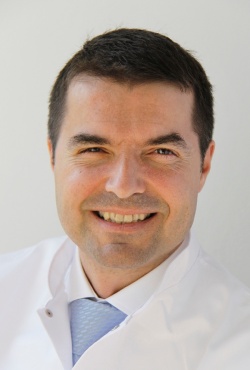Facing the eye of the storm
Be prepared for catastrophe management in trauma surgery
Major disasters and natural catastrophes occur all the time – but in most cases we are only aware of them as images in the news on our TV screens or in the newspapers. Fortunately, most European hospitals are confronted with such major events only occasionally.

It is all the more important to be well prepared ‘just in case’ -- a sufficient reason for trauma surgery and catastrophe management to be key topics at the forthcoming German Surgery Congress in Munich (3-6 May 2011).
Burns, fractures or contusions are part of daily routine for Professor Peter Biberthaler, Director of the Department of Trauma Surgery at the University Hospital rechts der Isar in Munich. Hence, he is not only an expert in treating these patients but also a researcher with good connections on an international level in multiple injury and critical care.
Prof. Biberthaler well understands what is important when many severely injured patients must be treated all at once following a large-scale incident : ‘Efficient medical care starts with the organisation of transport at the incident site. The ambulance service or the fire brigade initially assess the severity grade of injuries to ensure the optimal allocation of patients to hospitals in the vicinity.
‘Rescue coordination centres in Germany have catastrophe plans that strictly govern which patients should be admitted to which hospital. Thus, each hospital only admits the number of critically injured patients it is able to take care of simultaneously. Moreover, those patients are not transferred at once, but in sequential waves with an interval of approximately 30-40 minutes.
To ensure every move is perfectly performed during an emergency, regular training is important. Large-scale events, such as a bomb attack in a sports stadium or airport, with more than 100 severely injured patients and 500 with minor injuries and customised according to local safety conditions, are re-enacted for this purpose. ‘Simulating such catastrophe scenarios is extremely complex, but also irreplaceable for successful emergency care,’ explains Prof. Biberthaler, ‘because a later evaluation will show where possible error sources and problems occur.’
Technological innovations will also help to further improve safety and catastrophe management . Researchers in many locations are working on early warning systems, such as automated computer video evaluations, where cameras capture the speed of movement and density of people per square metre to ensure early warning in case of a risk of danger.
Trauma surgery itself is also developing at a rapid speed, the professor points out. ‘Since findings from materials technology and biomechanics have been integrated into this field, and because we’ve been giving biology more consideration during our operative procedures, we’ve increasingly been achieving improved results incase of highly complex injuries.’
Scanning
Recent studies on a large scale have also proved what many trauma surgeons have already suspected, i.e. that the early use of CT scanning, as part of resuscitation room management, increases patients’ chances of survival significantly because bleeds and fractures can be identified quickly.
The numerous technological and medical advances have also further increased the need for trauma surgery services: ‘Trauma surgeons are usually very dedicated to their field of expertise,’ the professor points out. ‘There are many colleagues for whom not just high-tech, but ‘high-touch’, meaning the human aspect of their medical work, is very important, and therefore they voluntarily travel across the world to help the victims of catastrophes, with great personal commitment.’
One topic of discussion that will also be of great interest for experts attending the congress is the issue of interdisciplinary emergency admissions. Whilst many hospitals in Germany are still operating subject-specific emergency admission departments specialising in the treatment of specific problems, large interdisciplinary emergency admission departments, which are open to emergencies of any kind, have already become established elsewhere, e.g. in the USA. ‘We can only be successful in emergency medicine on an interdisciplinary basis,’ Prof. Biberthaler believes. ‘As trauma surgeons we are specialised in the treatment of injuries of any kind, but we still also need the help of specialists in vascular surgery, plastic surgery or neurosurgery.’
Because 75% of patients in an emergency department are trauma surgery cases, a dual team leadership has proved beneficial -- in the context of this interdisciplinary concept this could for example be a trauma surgeon as head of department supported by a specialist in internal medicine. ‘Even though there are some concerns about the interdisciplinary approach with regards to the necessary training concepts, I still think that this is the future of emergency medicine,’ Prof. Biberthaler concludes.
06.05.2011









